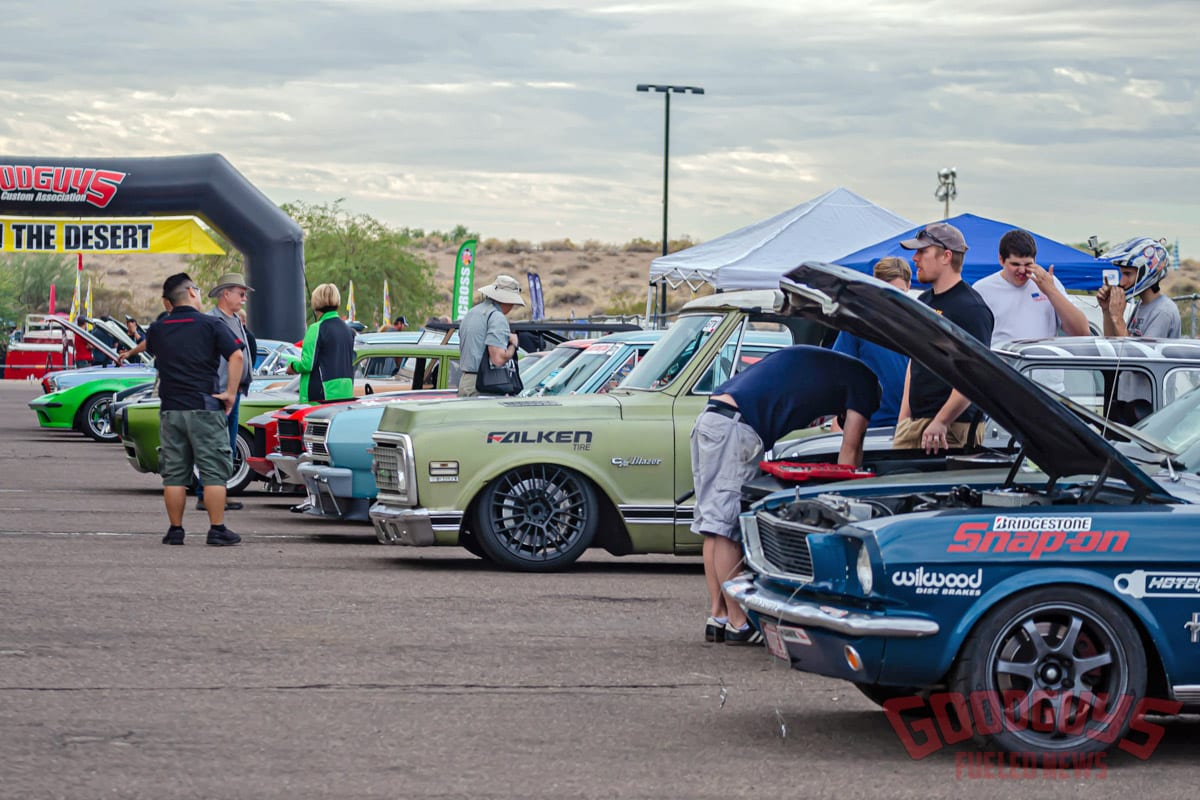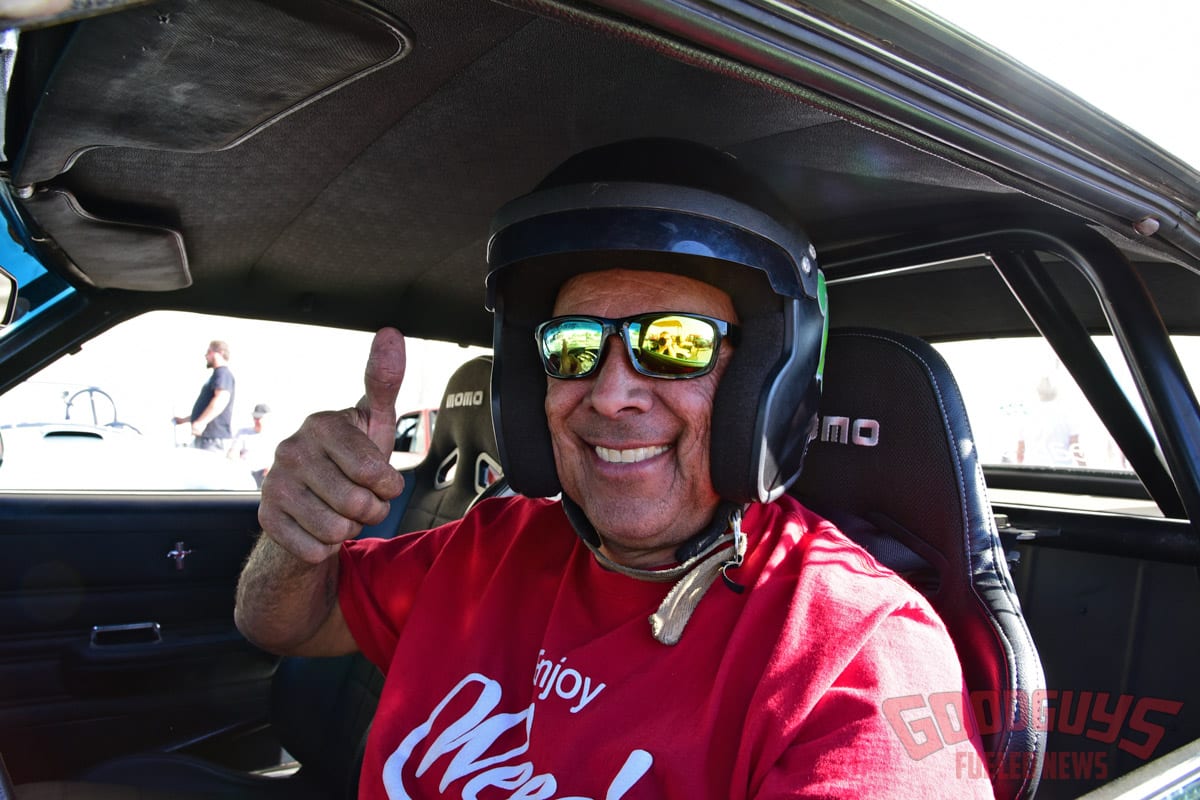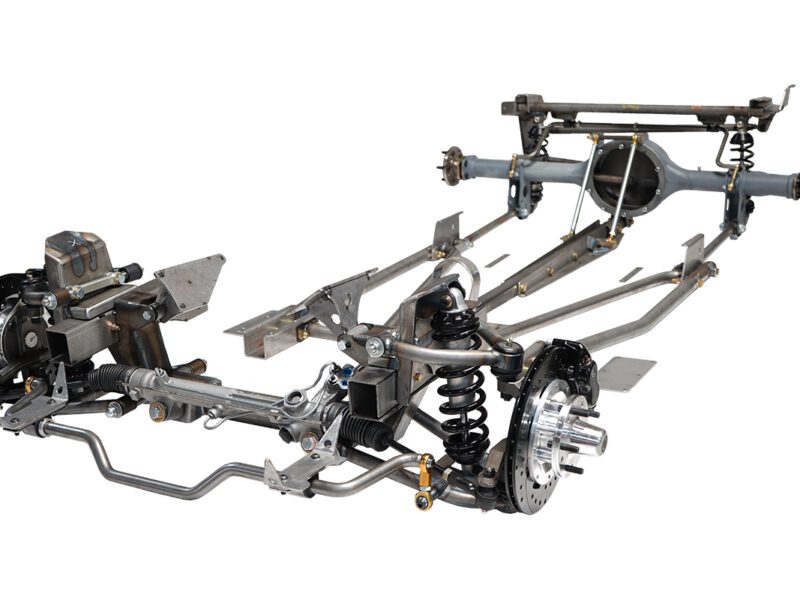A Beginner’s Guide to Goodguys CPP AutoCross
So, you’ve been attending Goodguys events for years and have been thinking about AutoCrossing your vehicle. Or maybe you just registered your vehicle for the first time and you’d like to give AutoCross a try. Well, you’re in luck, because this is a beginner’s guide to AutoCrossing and we’ll walk you through the basics of what to expect in a weekend at a Goodguys CPP AutoCross event.

AutoCross in the most basic terms is racing your vehicle around a coned course and striving to get the fastest possible time without hitting any cones. You’re not competing against other vehicles at the same time on the same track – it’s just you and the course. Most Goodguys events offer AutoCross as part of your paid admission – there’s no extra cost to compete. At this time, the only Goodguys events not offering AutoCross are the Pacific Northwest Nationals and the Great Northwest Nationals events in Washington.
Getting Started
The registration process for AutoCross vehicles is the same as it is for any Goodguys participant. You can register online or in-person at the event. Once you arrive at the event and get your participant packet, you’ll want to make your way to the AutoCross pits. If you’re new to the venue, ask the Goodguys staff to point you in the right direction or look for the giant inflatable Goodguys AutoCross arch.
Pit parking in the AutoCross area is on a first-come basis. The earlier you arrive, the more spaces there are to choose from. Depending on the venue, there can be over 100 vehicles competing, but no matter how many vehicles are registered, you’ll always get your chance to race.
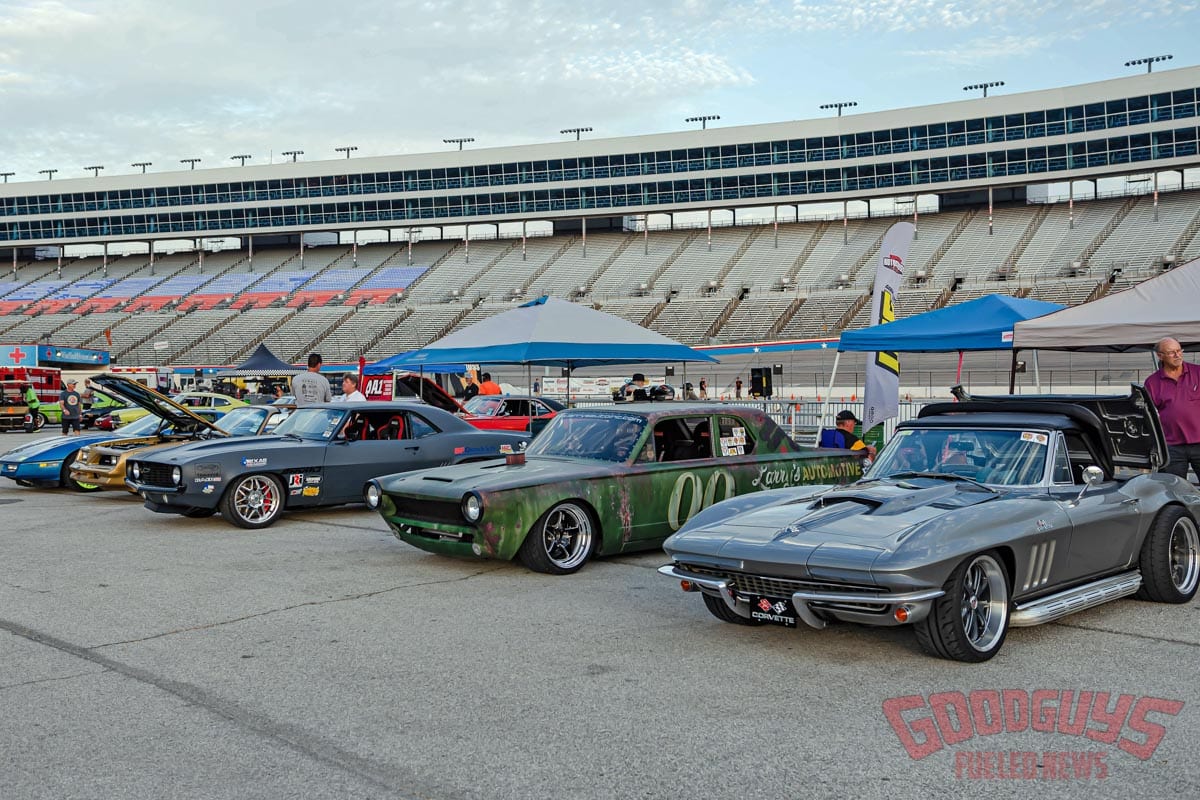
AutoCross pit areas can be claimed on a first-come basis. The earlier you arrive, the more options you’ll have, but there’s typically plenty of room for all competitors. Many racers bring pop-up tents and it’s usually a good idea to have chairs, tools, and refreshments.

Don’t forget a DOT- or SFI-approved helmet, as you’re required to wear one when running on the AutoCross course.
Next you’ll need to check in with the AutoCross staff to get your tech inspection, determine your class, and get entered into the Pronto timing system. There’s a Goodguys AutoCross tent at the starting area where you can ask to be teched. A Goodguys representative will come to your vehicle and make sure everything is in proper working order. The vehicle must be street licensed, insured, and have working lights and safety items. The registered name on the Goodguys vehicle window sticker will be the only driver allowed to drive it.
The tech inspection is pretty simple and quick. Some common things they look for are no leaks, battery mounted securely, all lug nuts on the wheels, DOT tires (which will be limited to a 200 minimum tread wear), working brake lights, a throttle return spring, and seats mounted secure to the body or chassis. For the full list of safety rules, visit GoodguysAX.com.

The Goodguys staff can also help you determine which of the six classes is most appropriate for you: PRO-X, PRO, Forgeline Street Machine, FiTech Challenger, LMC Truck, or Wilwood All-American. You can also register to make Fun Runs. For details on class breakdowns, check out the Back on Track article we published earlier this week.
Bring the Basics
It’s a good idea to bring some basic supplies for a day of AutoCrossing. Some people bring canopies for shade and a portable chair is highly encouraged, as well as a cooler with food and fluids. Bring your helmet, as it’s required to wear a DOT- or SFI-approved helmet when driving on the course. Goodguys does have loaner helmets available.

It’s a good idea to bring a selection of tools and be prepared to make adjustments and minor repairs between runs.
There are a few tools I recommend having with you. Items like a jack, jack stands, gloves, a small tool kit, torque wrench, and a tire pressure gauge are all good basics to bring. With that said, the AutoCross community is very friendly and most other competitors are willing to lend a helping hand, a tool, or to give driving advice.

Need help? The Goodguys staff is there to keep things running smoothly. Shown here are Eric Johnson, Antonio Howard, and John Borcher.
Driver Meeting
Each morning before the day of racing starts, the Goodguys AutoCross staff holds a meeting to go over what to expect during the day, break times, any rule changes, what to do if your car breaks down on the track, what not to do, and answer any questions racers might have. Before the 8am morning meeting you can go and physically walk the track you’ll be driving to get an idea of the layout of the course. This is also an ideal time to see the best driving lines to take and to visualize your braking zones. I recommend walking with some seasoned AutoCrossers, as they know what to look for and usually have good advice to share.
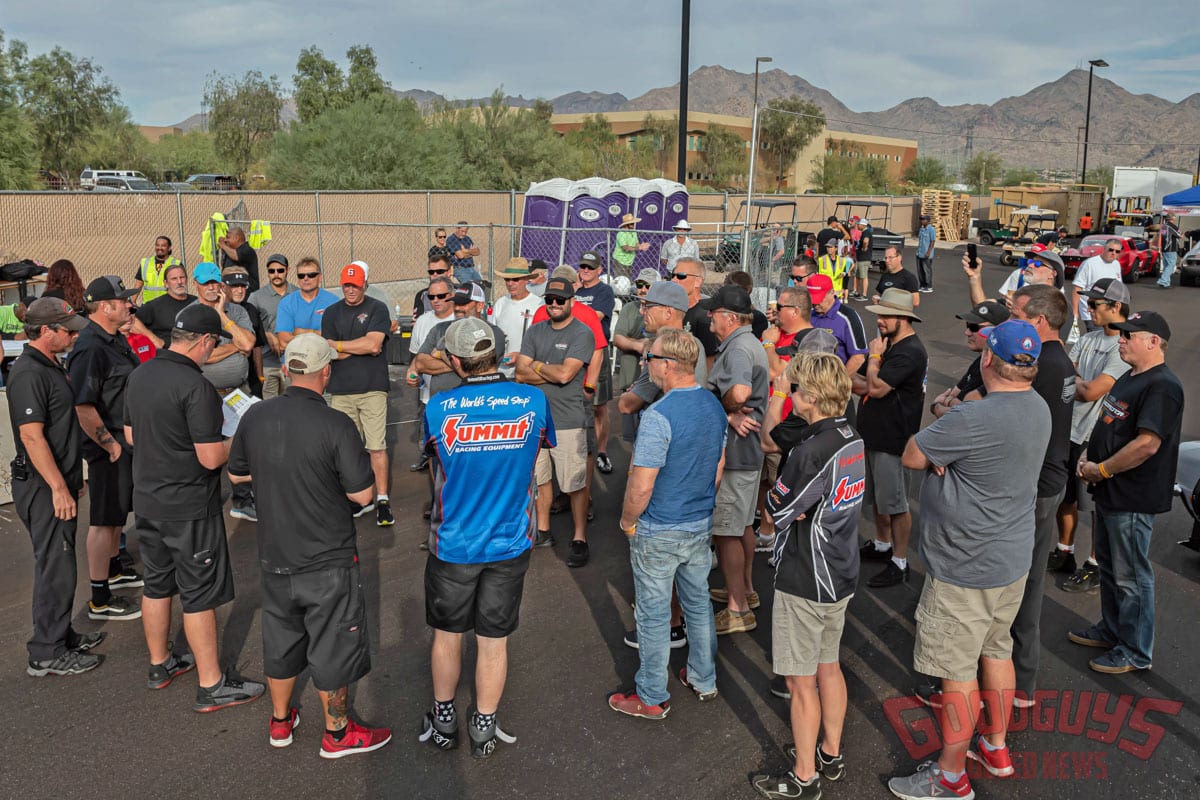
Each day begins with a driver meeting where the Goodguys staff will review rules, answer questions, discuss track conditions, and go over the schedule and any details for the day.
Time to Run!
Typically, the PRO-X and PRO classes will be the first to start racing. This is a great time to watch some runs. Walking the course is one thing, but watching seasoned racers drive can be invaluable. Once you see the line of vehicles moving and it’s getting closer to your turn, it’s time to get in and get prepared. Put your helmet on, buckle yourself in, and get your vehicle warmed up. Goodguys AutoCross works similar to the cafeteria line in grade school – one person goes and then it’s next in line until everyone has had their run and then it starts all over again.
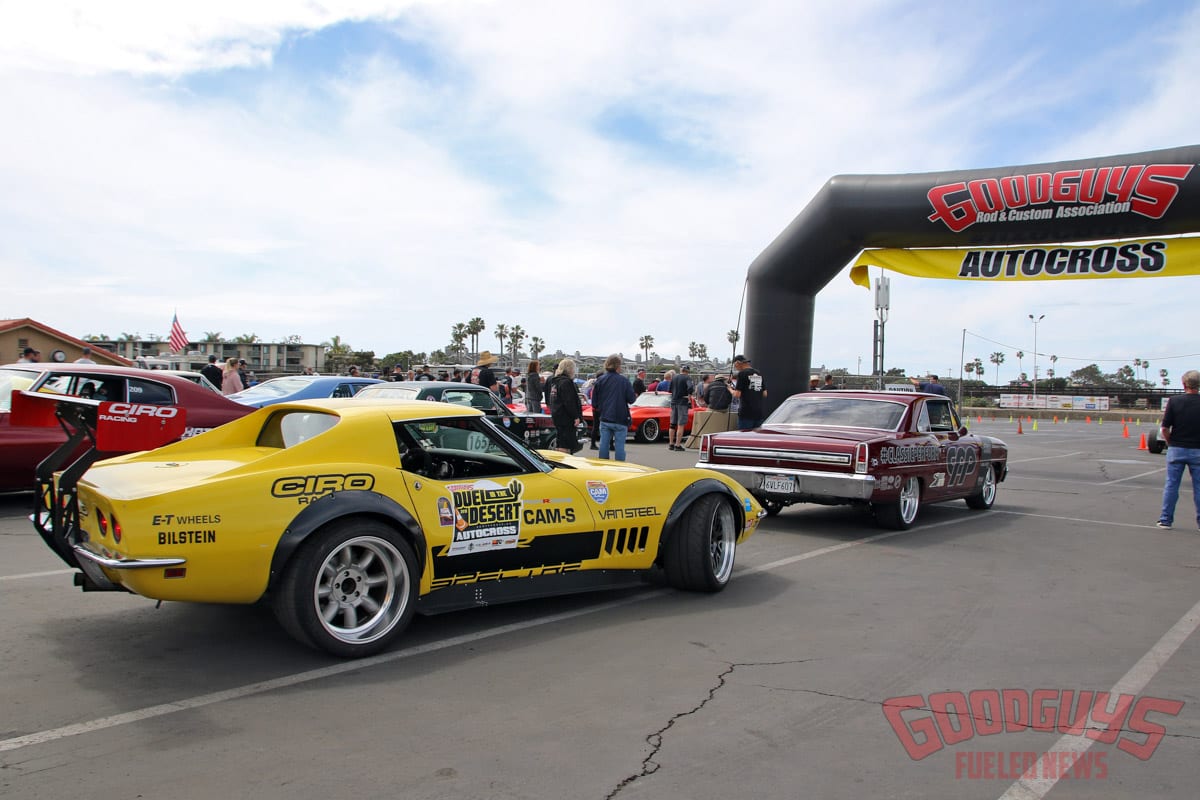
When it’s time for your class to make runs, it’s simply a matter of getting in line and waiting your turn.
As in drag racing, you’ll see a little Christmas tree on the side of the starting line. Watch the person in front of you to see what they do and where they line up their car or truck. As you approach the tree, the first amber light will glow. Then you slowly move up until the second amber light is lit. You are now “staged.” Keep your foot on the brake until you see the green light. Your time does not officially start until your vehicle physically moves forward.
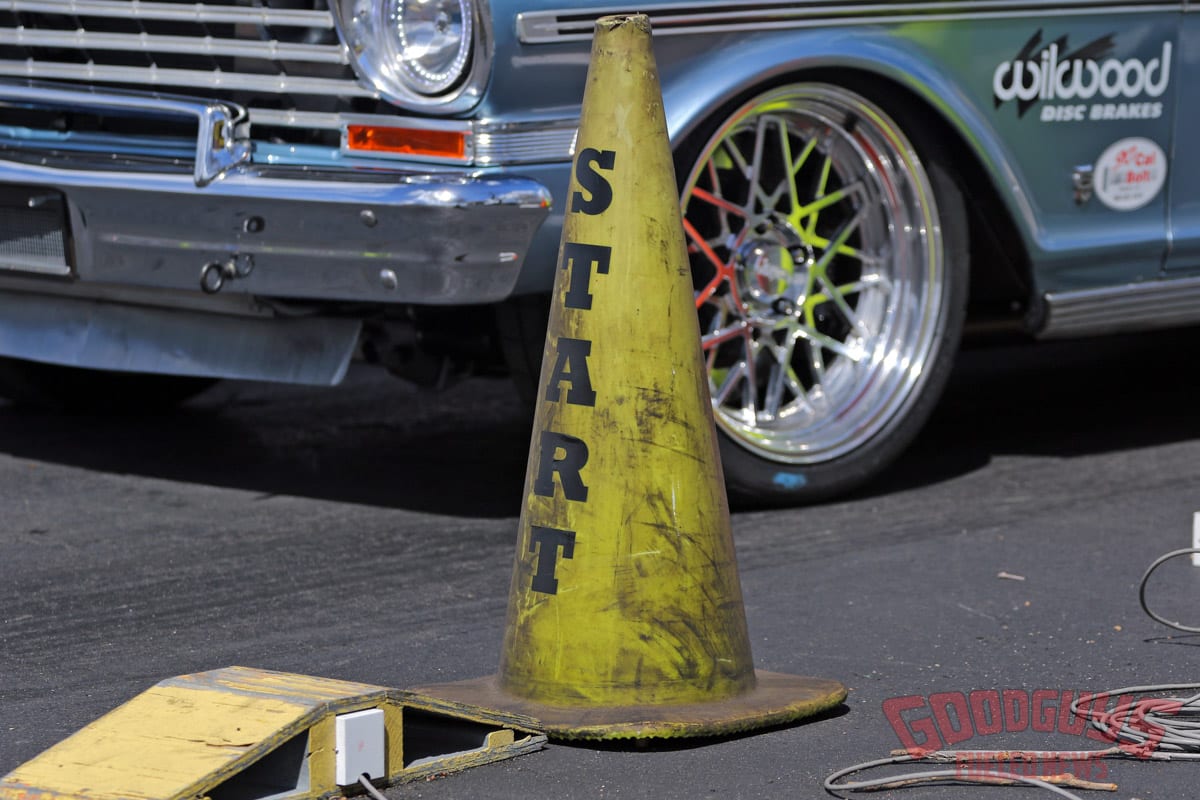
Lime green Start cones indicate where to line up. Like drag racing, you’ll see a Christmas tree near the starting line. You’ll slowly pull up until the first amber light glows, and then inch forward until the second amber light is lit to get yourself staged. Go when the light turns green – your time does not officially start until your vehicle physically moves forward.

Orange cones mark the course and tell you where to go – knock one down and you’ll earn a 2-second cone penalty.
After navigating the course as fast as possible, you’ll see the white cones with checkered flags. The timing clock stops when you pass those, and you need to brake and stop as quickly as possible in the stop box area – before you reach the red cones marking the end. Not coming to a complete stop will result in no time being recorded for the run.
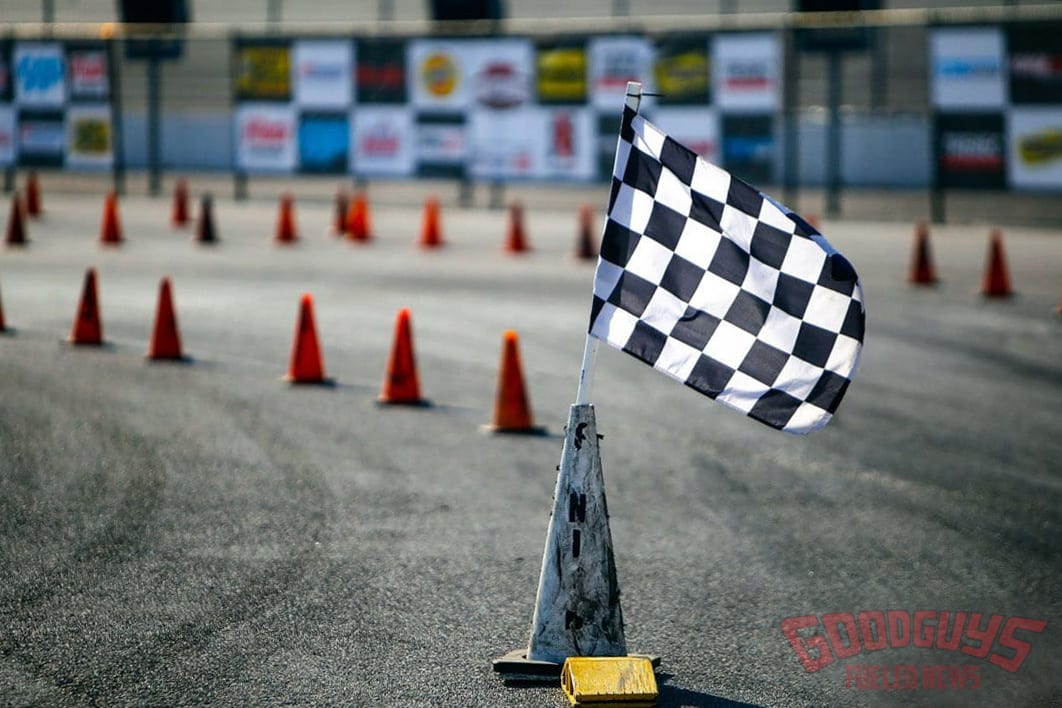
Time to stop! A checkered flag mark the end of the course and you must come to a complete stop after passing it.
Race & Improve
Results are determined by elapsed time and any cone penalties you might accrue during your lap. If you bump a cone and it remains upright, there is no penalty assessed. If you knock a cone over, it results in a 2-second penalty added to your lap time. As a first timer, you’ll primarily be racing against yourself, with a goal of improving on each lap. The number of laps you get in a day depends on the number of vehicles that sign up to race, but on average you can expect anywhere between five to eight runs in a day.

In between runs is a great time to talk to other competitors, ask questions, or go on ride-alongs. I highly encourage doing a ride along. This gives you an opportunity to see how more experienced drivers race – how heavy they are on the brakes, how hard they accelerate, and the driving lines they use to get the fastest lap possible. The AutoCross community is very open and drivers love taking others along.
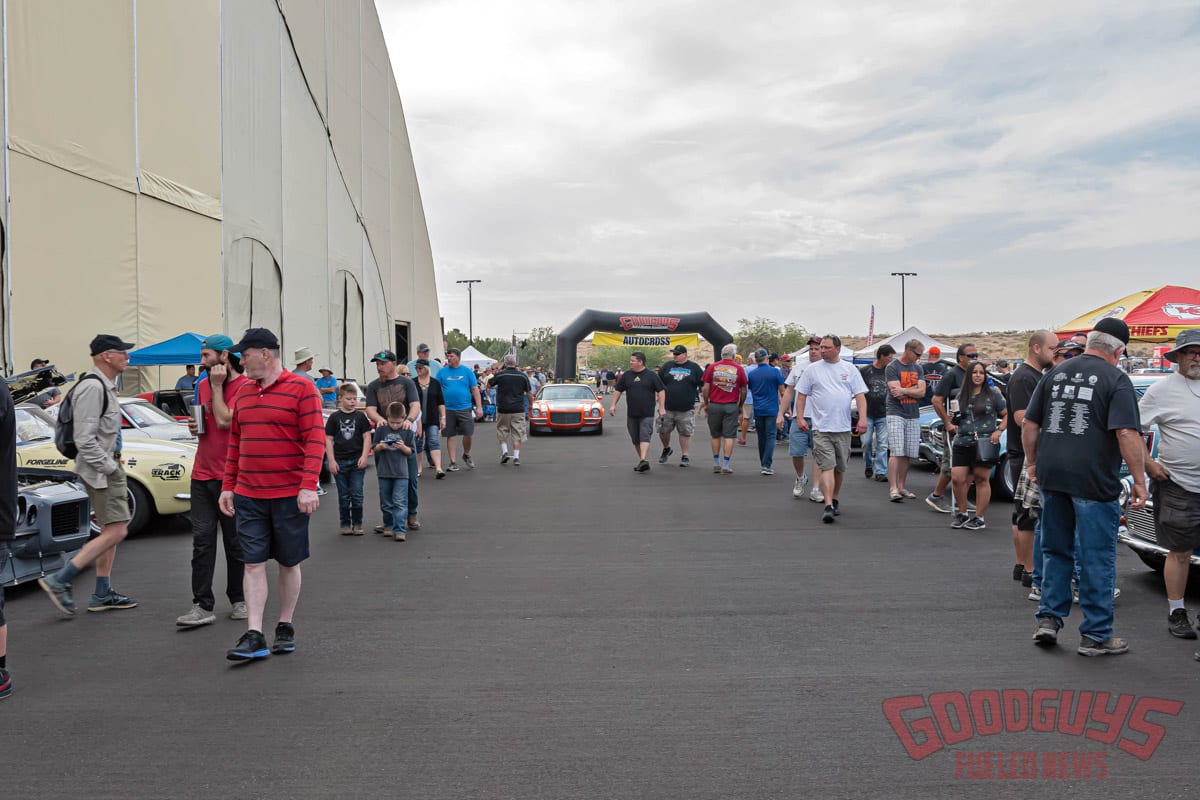
Racing culminates on Saturday afternoons at Goodguys National events (Sundays at Get-Togethers in Pleasanton) with ladder-style Shootouts comprised of the top drivers from each class. This makes for an exciting finale to a day (or two) of racing. It’s a similar process on All-American Sundays, with qualifying runs in the morning and All-American Shootout during the afternoon.
While you may be intimidated by some of the 800-horspeower purpose-built race cars or trucks, don’t let it stop you from joining in on the fun. There’s a huge misconception that you need loads of horsepower to compete in AutoCross, but most drivers will probably tell you they had the most fun when they were just starting out and everything was new and fresh. The point is to have fun and do what your vehicle was built to do – be driven. I guarantee that once you try AutoCross, the days of sitting next to your car all show weekend will be in your rearview mirror.


